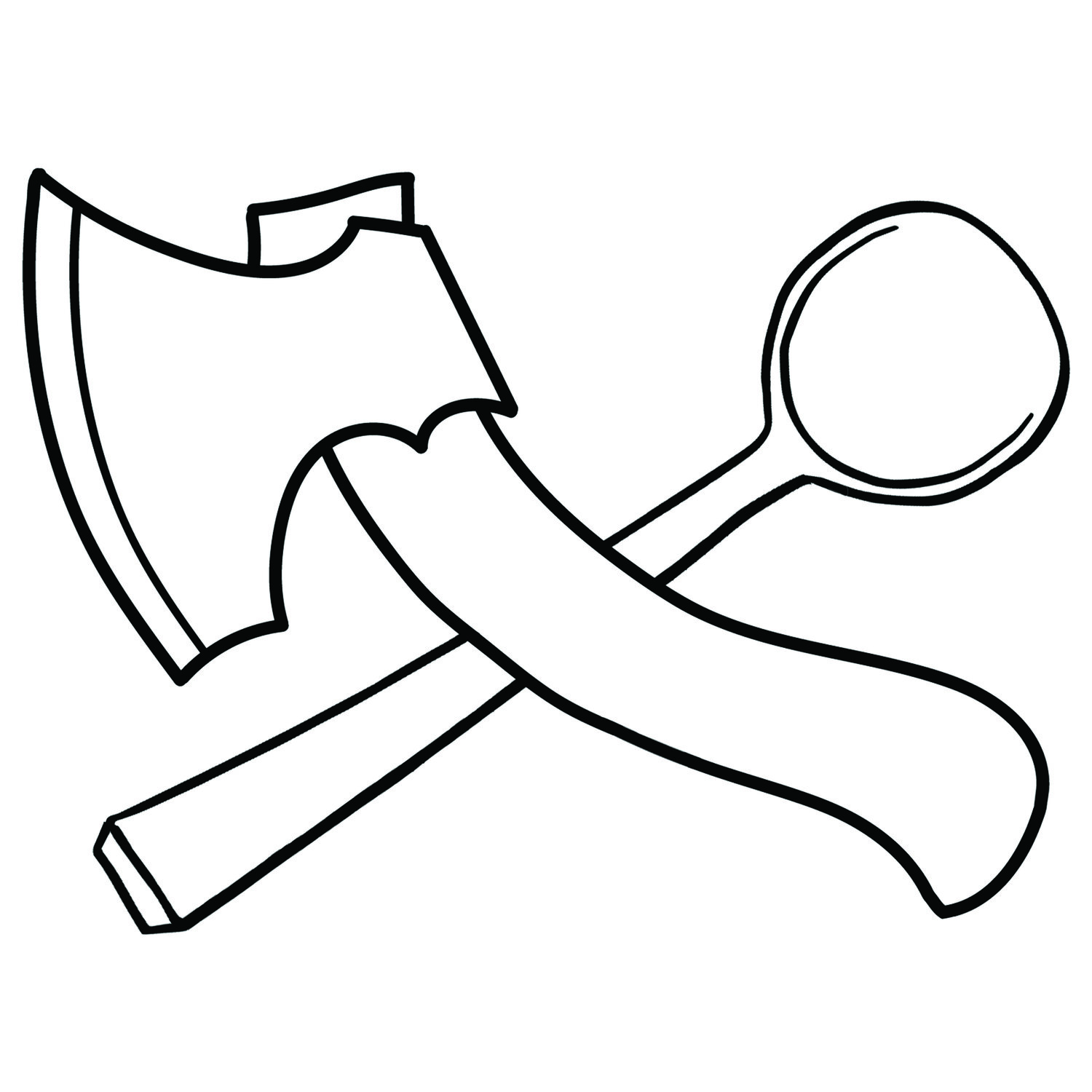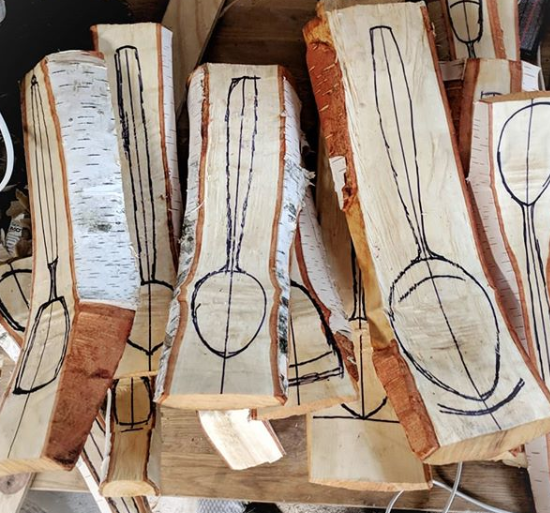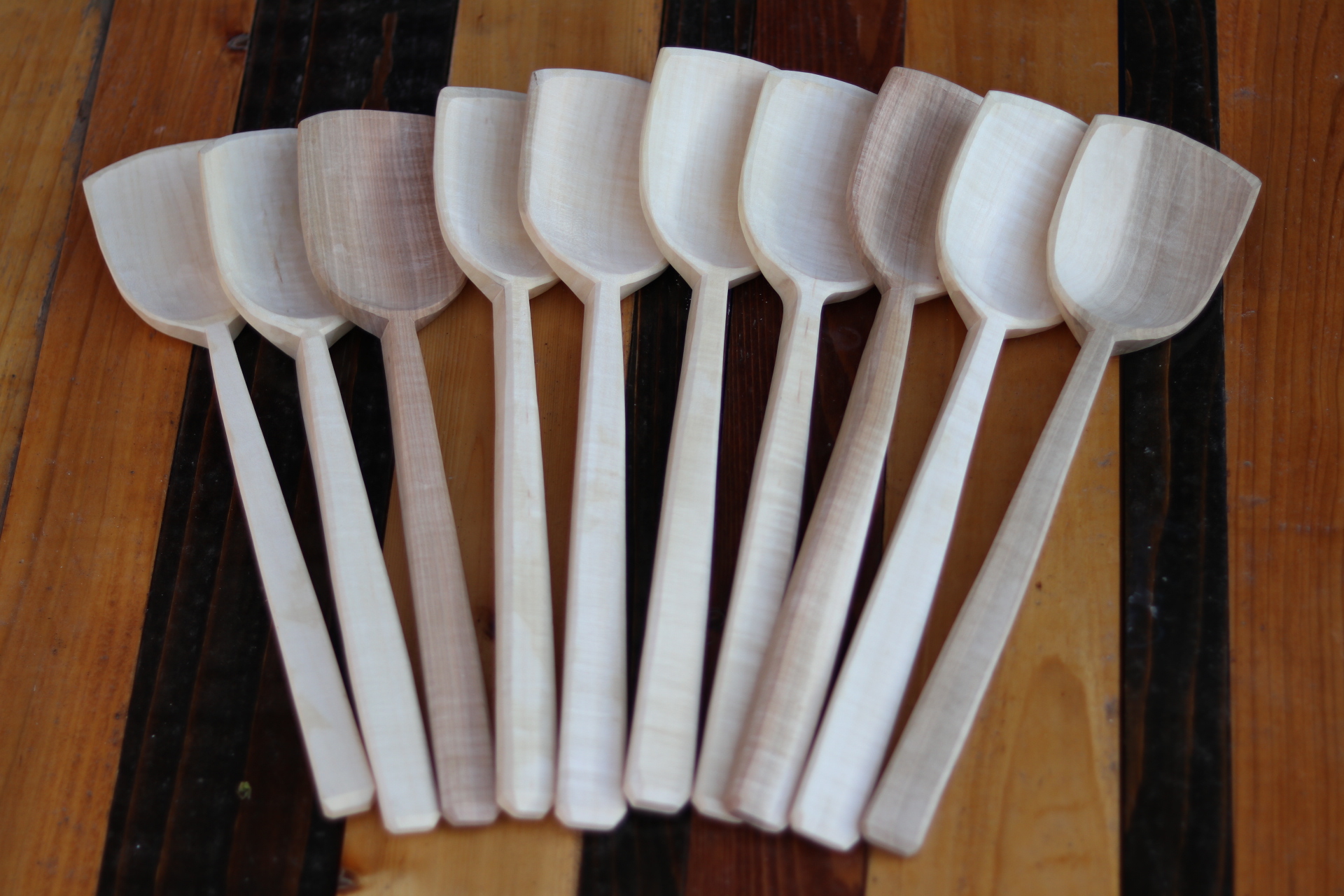5 Best Trees for Spoon Carving
So I used to live in the UK, where there are about 40 or so native tree species. For the past few years I’ve been living in the Midwest of the United States. The US is home to about 950 native or naturalised tree species. Granted, not all of them live in Wisconsin. That said, the Trees of Wisconsin Field Guide IDs 101 trees and claims most of them are native. So theres a lot of wood out there to carve.
For beginners, this can be a little overwhelming. You can narrow down your selection with the following sweeping statements. Don’t use softwoods (e.g. pines and spruces), don’t use ring porous species (e.g. oaks and ashes). Of course, you can carve a spoon from any wood but diffuse-porous wood tends to work best.
Paper Birch
I really like Betula papyrifera. It’s a common, fast growing species, easily identified by it’s white bark. It’s a pioneer species, quickly growing where land has been disturbed. It’s also fairly short lived, so I don’t feel quite so bad when it gets cut down.
For me, the wood is the perfect level of hardness for spoon carving. Easy to shape with hand tools, but tough enough to stand up to use in the kitchen. It has a Janka hardness of 4,000N. (The Janka hardness test measures the force required to embed an 11.28 millimetres (0.444 in) diameter steel ball halfway into a sample of wood. I love weird forms of measurement like that.)
Silver Maple
Acer saccharinum is very common here. It hybridises with Red Maple, so it can be hard to tell exactly what you’ve got, especially if you don’t have any leaves available, but either (and any in between) work well.
I love the smell of my workshop when I’ve been chomping through a bunch of maple. It might be my weakness for maple syrup, but the sweet, fresh scent of recently cut maple is my happy place. Come into my workshop unannounced and you might just catch me huffing the recently cut surface of maple like some sort of coke addict.
Silver maple is sometimes called Soft maple. It has a Janka hardness of 3,110N. So it’s softer than birch, but nowhere near woods I’d call soft (basswood (Tilia americana) measures just 1,800N). The name relates either to it’s tendency to lose branches in high winds or as a counter to Sugar maple Acer saccharum, which is also known as Hard maple (6,400N Janka hardness).
All maples have a beautiful grain to them. There’s often a chatoyance to it that catches the light in a subtle way. A lot of the silver maple I’ve worked with will have ripple grain somewhere in it. This adds to the beauty but can be a bit of a bugger to get a nice tool finish.
Black Cherry
I was shocked the first time I came across someone cutting down a Prunus serotina. The thing was massive. They can grow over 30 meters (100 ft) tall. Cherry trees I saw back in the UK were rarely over 10 meters (30ft). Things really are bigger in the States.
Black cherry has a lovely pink heartwood that contrasts nicely against the pale cream sapwood. The heartwood will darken over time to a reddish brown, but the contrast against the sapwood tends to stay. The heartwood and sapwood also have a different texture to them when carved. The sapwood feels thicker and more elastic, kind of like carving through plastic. The heartwood feels a lot more brittle. It’s Janka hardness is 4,200N.
Black Walnut
Just to show that rules are made to be broken, Juglans nigra is a semi-ring-porous. It’s a very desirable wood, often harvested for veneer and cabinetry. The great thing about spoon carving is that we don’t need the big bits of wood that gets turned into slabs. There’s plenty of material in the crown of the tree. A couple of years ago I got to paw through the crown wood of a locally cut walnut tree. The homeowners had sold the trunk but there was more wood in the crown than I could reasonably use.
Walnut carves real nice (4,500N Janka hardness). The heartwood is a rich dark brown but the sapwood is starkly pale in comparison. I carved a bunch of spoons that were half sapwood, half heartwood and a couple of people asked if I’d glued two species together.
Walnut does has a strong smell, which translates to a bit of flavour when still green. This will diminish over time and be overpowered by something like linseed oil.
Apple
My love of applewood probably signifies some sort of deep seated self loathing. It’s the hardest wood on this list (7,700N Janka), full of knots and nearly always has twisted grain. It also doesn’t grow very large so doesn’t work well with my style of production carving. But I just really like it. The light brown colour, subtle difference between the heartwood and sapwood. It’s a quietly beautiful wood. It’s not as shouty as cherry and walnut, warmer than maple and birch. The denseness of the wood results in utensils that feel reassuringly heavy. The complications of knots and twisty grain make any spoon you can tease out feel like a real achievement.
If you enjoy reading the content of this site and find it to be useful, help me to be able to spend more time on similar articles by becoming a Patreon.




